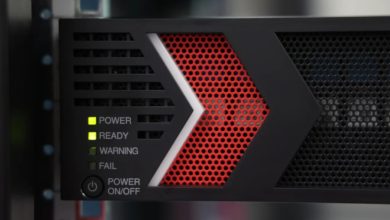
Critical sectors, such as the Financial Services Industry (FSI), are under pressure to migrate from a legacy IT infrastructure to a more modernised and cloud-connected platform. As time passes, the business world gets more volatile, dynamic, and demanding as it coincides with the very rapid digitalisation of the economic surface area as we know it.
Last September, IBM introduced the Power10 server to bring optimisation for databases and core business applications, especially for the efficiency of containerised applications. Since then, IBM has been upgrading and expanding the capabilities of Power10 to become as fluid as the digitally evolving industries.
Tech-Refreshed
One of IBM’s defining characteristics is the promotion of adaptability throughout its product lines to ensure a resilient infrastructure that will last for years, if not decades. All 33 Malaysian banks have implemented IBM’s IT infrastructure in some form or another, encompassing all levels of the country’s financial hierarchy, and it has served them well for decades.

However, owing to the fast accelerated digitalisation and migration of all IT processes to the cloud or hybrid settings, IBM and its partners have been compelled to embrace cloud-native services designed to maximise the value of current infrastructure investments. How does IBM address this agenda? For starters, the IT behemoth invested in advancing legacy infrastructure rather than rebuilding for a completely new system, which makes financial sense. It is now possible to extend the life of all on-premises equipment by integrating and connecting to the cloud.
IBM Customers may now benefit from a hybrid cloud experience that can be managed across their whole IT infrastructure thanks to the new Power10 E1080 server, which was announced in September 2021. A broader range of high-end server capabilities becomes available by connecting midrange and scale-out servers to the IBM Power10 family. Aside from transparent memory encryption and improved processor/system separation, new scale-out servers benefit from the Linux Foundation’s OpenBMC initiative.
New extended feature of Power10 includes:
- All new infrastructure
Expanding on earlier Power10 processors with twice as many cores and more than twice the memory bandwidth, IBM has introduced the Power10 Midrange E1050, which delivers record-breaking compute1, Java2, and ERP3 performance on a 4-socket platform. The entry-level Power S1014, as well as the S1022, and S1024 choices, deliver professional features, such as Capacity Upgrade on Demand, to SMBs and remote offices/branch offices (CuOD). - Flexible consumption for cloud on-premises
For IBM Power Private Cloud, IBM has finally introduced new flexible consumption options that allow customers to pay only for what they use, allowing them to minimise the cost of hosting OpenShift solutions on Power compared to other platforms. They expand on IBM Power Virtual Server’s choices to provide customers more flexibility in their hybrid journeys. Additionally, the eagerly awaited IBM i subscription offers a full platform solution that includes hardware, software, and support/services. - SAP-driven business transition
IBM is continuing to develop SAP solutions. Customers deploying BREAKTHROUGH with IBM for RISE with SAP will benefit from the new midrange E1050, which provides scale (up to 16 TB) and agility in a 4-socket system. Additional options for running workloads on IBM Capacity on Red Hat Enterprise Linux on IBM Cloud are now available as part of the premium provider package, which provides greater flexibility and computation resources.
Silverlake, Symmetry at Work
IBM is still getting its feet wet in the world of hybrid cloud architecture. Silverlake is one of IBM’s valued partners and provides business and IT operations solutions that are safe, versatile, and scalable in conjunction with IBM’s Power10 server, particularly for the FSI. These solutions are designed with the FSI in mind. Silverlake’s Silverlake Integrated Bank System (SIBS) is available in three different dynamic cloud models, each of which is designed to be used for a different form of financial endeavour.

3 Dynamic Cloud Models:
- Hybrid SIBS – Focuses on the adaptability of hybrid architecture and technologies. Customers may personalise and mix and match product packages.
- SIBS on Cloud – Enables a transition across Multi-Hybrid Cloud systems. Focuses on tactical development and testing in addition to country-specific disaster recovery.
- SIBS as a Service – It is a complete bank-in-a-box system. This model provides for the consolidation of technological resources.
Since SIBS is certified and cloud-capable to deliver Universal Banking Capabilities on-demand, FSIs may now take advantage of SIBS’ best-in-class performance together with IBM’s new and upgraded Power10, for security and stability in the Hybrid Cloud.
Getting on the Same Wavelength
As businesses all over the world continue to respond to unpredictable variations in customer behaviours and expectations, they have an expanding desire for a new infrastructure that can deliver their applications and insights in a safe and timely manner, precisely where and when they are required.
Power10 by IBM and Silverlake’s SIBS work harmoniously together to bring their features to the table to satisfy customers’ desire for a more powerful FSI IT and business infrastructure. It would be exciting to explore what kind of opportunities this partnership may generate in the not-too-distant future for other essential sectors that are in need of a digital overhaul.




